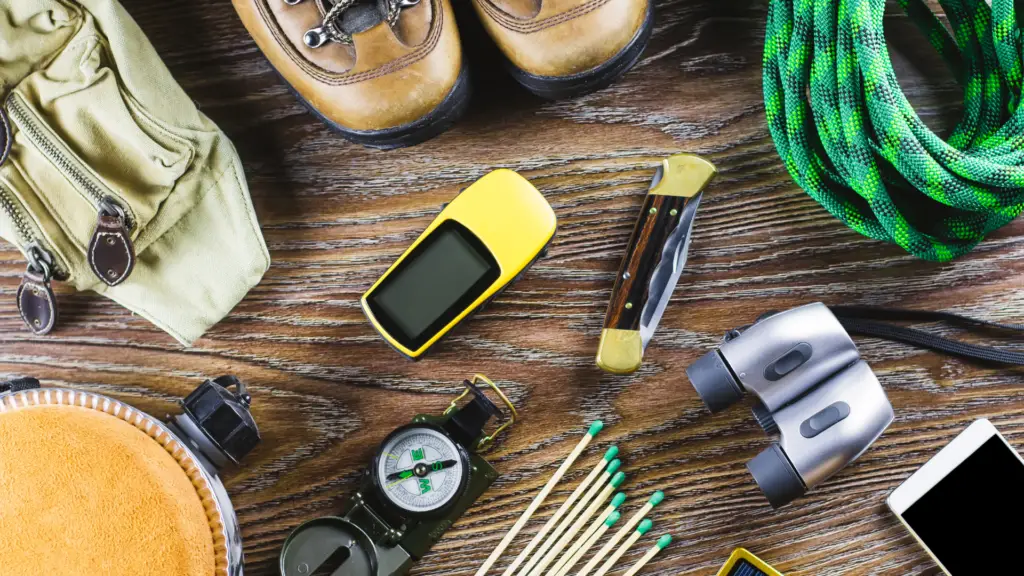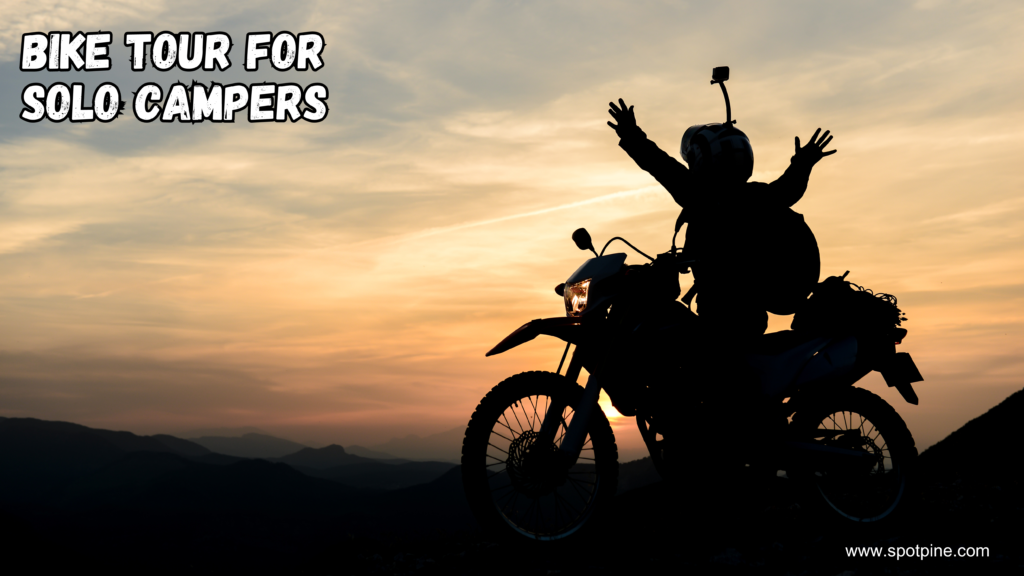Ensure safety with a solo camping checklist for beginners to mitigate potential risks and emergencies. Solo camping requires proper preparation and awareness of your surroundings for a safe and enjoyable experience.
As a beginner, following a comprehensive checklist can help you stay organized and ready for any situation that may arise during your solo camping trip. By covering essential items like first aid supplies, communication devices, navigation tools, and emergency contacts, you can enhance your safety while exploring the great outdoors on your own.
In this guide, we will outline key safety tips and essential equipment to include in your solo camping checklist as you take on your outdoor adventure.
Solo Camping Safety Checklist
Emergency Contacts Information
Prepare a list of trusted individuals for emergencies.
- Include family members, friends, and local emergency services.
- Share your itinerary and check-in times with them.
First Aid Kit Essentials
Pack essential items for handling injuries and health issues.
- Bandages, antiseptic wipes, pain relievers.
- Tweezers, adhesive tape, and any personal medications.
Check Weather Conditions
Stay informed about the weather forecast for your camping location.
- Dress appropriately for the anticipated conditions.
- Plan shelter options based on potential weather changes.
Choosing The Right Camping Spot
When embarking on a solo camping expedition, choosing the right camping spot is crucial. The perfect location sets the stage for a safe and unforgettable experience in the great outdoors. In this section, we will explore three key factors to consider when selecting your camping spot: researching the area, evaluating accessibility, and considering wildlife.
Research The Area
Before setting up camp, it is essential to research the area thoroughly. By gathering information about the terrain, weather conditions, and any potential safety hazards, you can make an informed decision. This research allows you to choose a spot that aligns with your camping goals and ensures a pleasant and secure experience.
Evaluate Accessibility
Being able to access your camping spot easily is vital, especially when you are camping solo. Consider factors such as the distance from the parking area to the campsite, the condition of the trail or path, and any obstacles that may hinder your journey. Ease of access contributes to your overall safety and convenience, allowing you to set up camp efficiently.
Consider Wildlife
When camping in the wilderness, it is essential to respect and coexist with the local wildlife. Before selecting your camping spot, be sure to research the types of animals that inhabit the area. Avoid choosing a location known for frequent wildlife activity, such as bear feeding grounds or areas with high snake populations. By considering wildlife, you can minimize the chances of unexpected encounters and ensure your safety throughout your solo camping adventure.

Packing Smartly
When it comes to solo camping, packing smartly is essential to ensure a safe and enjoyable experience. As a beginner, it’s important to have a comprehensive checklist of essential gear, food and water supplies, and navigation tools. Always remember to pack light and only bring what is necessary for a smooth camping trip. Let’s dive into the essentials of packing smartly for solo camping.
Essential Gear Checklist
- Tent: A sturdy, weather-resistant tent to provide shelter.
- Sleeping Bag: Suitable for the expected conditions, with insulation for warmth.
- First Aid Kit: Including basic medical supplies and medications.
- Flashlight/Headlamp: To navigate in the dark and for emergencies.
- Multi-tool: Such as a Swiss Army knife for various functions.
- Insulated Clothing: Layers suitable for the climate and weather.
Food And Water Supplies
- Non-perishable Food: High-energy snacks, canned goods, and dried fruits.
- Water: Sufficient supply for the entire trip, with a water filter or purification tablets as a backup.
- Cooking Essentials: Lightweight stove, cooking pot, and utensils for preparing meals.
- Bear-Resistant Food Storage: To protect food from wildlife.
Navigation Tools
- Map and Compass: Essential for orienteering and backup for electronic devices.
- GPS Device: To track your location and provide necessary information.
- Emergency Signaling Devices: Such as a whistle and mirror for alerting others in case of emergencies.
Setting Up Camp
Setting up camp is a crucial aspect of solo camping safety. Follow these guidelines to ensure a safe and enjoyable experience.
Pitching Tent Properly
Choose a flat and clear area to pitch the tent. Use the groundsheet underneath for protection.
Safe Campfire Practices
Construct fires only in designated fire pits or use a portable stove for cooking.
Storing Food Securely
Keep food in sealed containers or hang it in a bear bag away from the campsite.

Staying Safe During The Trip
Solo camping can be an exhilarating experience, but it’s crucial to prioritize safety during your trip. By following a few essential guidelines, you can ensure a safe and enjoyable adventure. Here’s a look at how you can stay safe during your solo camping trip:
Navigating Trails Safely
When navigating trails, it’s important to follow some safety measures to minimize the risk of accidents. Remember to:
- Study the trail map and familiarize yourself with the route before setting out.
- Carry a compass or GPS device to stay oriented and on the right track.
- Mark your path with readily visible trail markers to avoid getting lost.
Wildlife Encounters
Encountering wildlife is a possibility when camping solo, and it’s essential to be prepared. Here are some safety tips for wildlife encounters:
- Keep a safe distance and never approach or feed wild animals.
- Store food securely to avoid attracting wildlife to your campsite.
- Make noise while hiking to alert wildlife of your presence.
Personal Safety Measures
Personal safety is paramount while camping alone. Take the following precautions to safeguard yourself:
- Carry a first-aid kit and know how to use it in case of emergencies.
- Inform someone of your itinerary and check in regularly if possible.
- Bring ample water and food supplies to stay nourished and hydrated throughout your journey.
Emergency Preparedness
Emergency preparedness is crucial when you are embarking on solo camping adventures. Being alone in the wilderness means you have to take responsibility for your safety and well-being. In this section, we will cover three important aspects of emergency preparedness: communicating with loved ones, handling injuries, and lost and found protocol.
Communicating With Loved Ones
Staying in touch with your loved ones is essential to ensure they are aware of your whereabouts and that you can receive assistance if needed. Here are a few key tips:
- Share your camping itinerary with a trusted family member or friend.
- Provide them with information about your campsite, including its name, location, and contact details.
- Establish a regular check-in schedule and let them know when and how to expect your updates.
Handling Injuries
Accidents can happen, even to the most experienced campers. Be prepared for potential injuries with the following tips:
- Pack a well-stocked first aid kit, including bandages, antiseptics, pain relievers, and any necessary prescription medications.
- Know basic first aid procedures for common camping injuries like cuts, burns, sprains, and insect bites.
- Learn how to identify and respond to more serious conditions, such as dehydration, hypothermia, or heatstroke.

Lost And Found Protocol
Getting lost in the wilderness can be a frightening experience, but having a plan in place can help you stay calm and increase your chances of being found. Consider the following:
| Lost and Found Protocol | Action |
| Stay put and don’t panic | If you realize you’re lost, stop moving, and try to stay calm. Panic can cloud your judgment and make it harder for rescuers to find you. |
| Signal for help | Use a whistle, mirror, or flashlight to attract attention. Three short bursts or flashes are recognized as a distress signal. |
| Leave clear signs | Mark your trail with visible signs using rocks, tree branches, or ribbons to help search and rescue teams locate you. |
| Follow water sources | If possible, follow a stream or river downhill. This often leads to civilization and increases your chances of finding help. |
Leave No Trace Principles
When camping solo, adhering to the Leave No Trace Principles is crucial. These principles guide campers in minimizing their environmental impact. Here are essential considerations:
Proper Waste Disposal
- Carry out all trash and dispose of it properly.
- Use designated waste disposal facilities when available.
Respect Wildlife
- Observe wildlife from a distance.
- Avoid feeding or approaching them.
Minimize Campfire Impact
- Use existing fire rings when possible.
- Ensure fires are fully extinguished before leaving.
Enjoying Your Solo Camping Experience
Solo camping can be an incredibly rewarding experience, allowing you to disconnect from the noise of everyday life and reconnect with nature. To make the most of your adventure, it’s important to ensure you are prepared and take necessary precautions for your safety and enjoyment. In this section, we’ll explore some helpful tips for stargazing, disconnecting from technology, and practising mental well-being during your solo camping trip.
Stargazing Tips
Stargazing is one of the highlights of any camping trip, especially when you’re in a remote location away from city lights. To make the most of your stargazing experience, consider the following tips:
- Choose a clear night with minimal cloud cover.
- Find a spot away from trees and other obstructive objects.
- Allow your eyes to adjust to the darkness for optimal visibility.
- Consider using a star map or smartphone app to identify constellations.
- Bring a comfortable chair or blanket to sit or lie on while observing the night sky.
Disconnecting From Technology
In today’s hyperconnected world, taking a break from technology can do wonders for your overall well-being. Solo camping provides an excellent opportunity to disconnect from your devices and fully immerse yourself in the present moment. Here are some strategies to help you disconnect:
- Set a specific period during your camping trip dedicated to being technology-free.
- Turn off your phone or switch it to airplane mode to avoid distractions.
- Engage in activities that don’t require electronic devices, such as reading a book or practising mindfulness.
- Embrace the simplicity of nature and appreciate the beauty around you without the filter of a screen.
Mental Well-being Practices
Camping provides an opportunity for introspection and reconnecting with your inner self. By incorporating mental well-being practices into your solo camping experience, you can enhance your overall sense of peace and relaxation. Here are some practices to consider:
- Engage in meditation or deep breathing exercises to calm your mind and improve focus.
- Take nature walks and embrace the therapeutic benefits of being surrounded by natural beauty.
- Practice gratitude by reflecting on the simple pleasures that camping offers, such as the sound of birds chirping or the warmth of a crackling campfire.
- Write in a journal to capture your thoughts and emotions throughout your camping journey.
FAQs:
How Do I Choose A Safe Camping Spot?
Choosing a safe camping spot involves looking for level ground, proximity to water and an escape route, avoiding areas prone to flooding or falling debris, and checking for potential wildlife or insect habitats.
What Safety Gear Should I Bring For Solo Camping?
Essential safety gear includes a first aid kit, a whistle, a navigation tool, extra food and water, a multi-tool, a flashlight, a fire starter, and a personal locator beacon for emergencies.
How Can I Protect Myself From Wild Animals While Camping?
Protect yourself from wild animals by making noise, storing food properly, using bear-proof containers, hanging food bags at least 10 feet off the ground and 4 feet from the tree trunk, and following guidelines for encounters with different wildlife.
What Should I Do If I Encounter Severe Weather While Solo Camping?
In case of severe weather during solo camping, seek shelter in a sturdy building or low-lying area, avoid camping near bodies of water, monitor weather forecasts, carry a weather radio, and pack rain gear and warm clothing.
Conclusion
To summarize, solo camping can be an exhilarating and rewarding experience, but it’s crucial to prioritize safety. By following the comprehensive checklist outlined in this blog post, beginners can ensure they are well-prepared and equipped for a successful adventure. Remember to prioritize essential items like navigation tools, emergency supplies, and proper communication devices.
Taking proper precautions and being aware of potential risks will contribute to a safer and more enjoyable camping trip. Happy camping!




Pingback: Solo Camping in USA for Foreigners: Ultimate Guide
Pingback: Solo Camping in USA: A Guide for International Students
Pingback: Is Solo Camping Safe: Essential Safety Tips
Pingback: Solo Camping Tips: Expert Strategies for a Memorable Adventure